The Maryland Reporter
By Daniel Menefee
January 25, 2017
Maryland House and Senate Democrats are moving to stamp out prescription drug price gouging and force drug makers to reveal how their drugs are priced.
On Tuesday, policy analysts, advocates and an assistant attorney general testified before the Senate Finance Committee that prescription drug prices will remain unaffordable without more competition in the generic drug market and better transparency in drug pricing, where prices have increased by as much as 1000% in a one-year period.
But pharmaceutical groups said that research and development for new drugs requires significant investment that should be recognized when prices are set.
Sen. Joan Carter Conway, chair of the Education, Health and Environmental Affairs Committee and Del. Eric Bromwell, new vice chair of the Health and Government Operations Committee, will sponsor bills in their respective chambers that they hope will be the future of drug regulation in Maryland and result in more affordable prices for consumers.
House and Senate majorities, all Democrats, have signed on as co-sponsors of the bills.
“In the U.S. we consistently spend more per capita than other countries on prescription drugs,” said Dr. Caleb Alexander, a prescription drug researcher at the Johns Hopkins Bloomberg School of Public Health. “These prices are impeding access for millions of Americans, including many residents of Maryland.”
1% of drugs account for 30% of money spent on prescriptions
“It’s one thing if the costs are high but it’s another if patients are not getting the necessary treatments,” he told the committee. He said while specialty drugs account for 1% of pharmaceuticals they account for more than 30% of the annual spending on prescription drugs in the U.S.
The testimony comes a little over a month after Maryland joined 19 other states in a lawsuit against six generic drug makers for market manipulation and anti-competitive behavior.
“What we allege is these companies conspired to fix prices,” said Maryland Attorney General Brian Frosh at a rally Jan. 10 in support of the two bills that would authorize the state to sue drug makers for price gouging — and require that companies give public notice when price hikes exceed 10%.
Much of how drug prices are set remains obscured.
Alexander said that especially with brand name drugs, determining fair prices is difficult because companies have resisted calls to improve transparency about things like the cost of developing drugs.
He also expressed skepticism that the free market model can make prices affordable.
“There are many reasons to be skeptical,” he said. “Drug prices don’t fall in the usual economic models, they’re not transparent to consumers and they don’t correspond with common sense measures to determine reasonable prices.”
Alexander, a practicing doctor, said he sees patients every week where he identifies patient “non-adherence” to their prescription regimes due to the high costs. He said nationally about one in four patients report problems affording their prescriptions or skipping other bills to afford their medication.
“Drugs don’t work in patients who don’t take them,” he said, quoting former U.S. Surgeon General C. Everett Koop.
Solutions from state governments
Many at the committee briefing said that state governments can provide solutions.
Dr. Steven D. Pearson, founder and president of the Institute for Clinical and Economic Review, said that the state should first have a foundation for making judgments on what is considered a fair price.
Pearson also advocated for states to combine purchasing power as a consortium and regulate the drug industry as a utility. He cited New York Gov. Andrew Cuomo’s recent proposal to cap Medicaid drug reimbursements by requiring rebates as an example of steps states can take. He also suggested targeting transparency laws at where price problems actually exist.
Drug prices rise exponentially
Maryland Assistant Attorney General Joshua Auerbach said generic drugs have skyrocketed, pointing to “striking conclusions ” in two studies where free market forces were not maintaining price stability.
“When markets are working right, generics drugs are often manufactured by numerous companies and these companies are competing with one another,” Auerbach said. “This means generic drugs should be highly cost effective.”
He said a trend in the spike of certain generic drugs is not due to the costs of research and development but because of a lack of manufacturers and a lack of competition – creating an opening for price gouging.
Auerbach said a U.S. Government Accountability Office report of 1,400 generic drugs saw 351 of those drugs experience an “extraordinary price increase” from 2010 to 2015, where the increase was 100% or more in a one-year period. In more than a dozen cases prices increased by 1000% in one year. He said 103 of the drugs saw “extraordinary price increases” in just the last year of the study.
“There is an emerging trend of conduct among some drug manufacturers that can be regarded as unethical,” he said. He said a number of manufacturers have recognized their near monopoly powers and “multiplied the prices of their drugs.”
Dr. Jeremy A. Greene, a medical historian at Hopkins, testified that one cause of price hikes with generics is that 17% of all generics only have one manufacturer.
High research and production costs
Regulators should be careful not to hinder innovation, a research firm pointed out.
“Creating new medicines is complicated and it’s complicated because science is complicated,” said Matthew Bell COO of MedImmune, a biotech research firm in Gaithersburg, and a subsidiary of Astrazeneca, a multinational pharmaceutical company based in Britain.
“Bringing a new medicine to market and to a patient is a long complicated and expensive process that requires significant investment,” Bell said. “There are few other industries that take quite so long and carry so much risk to bring a new product to market.”
“We invest about 25% of our revenues every year in R&D,” he said. “To put that in real terms it’s about $5.5 billion a year.”
Last modified: January 26, 2017



